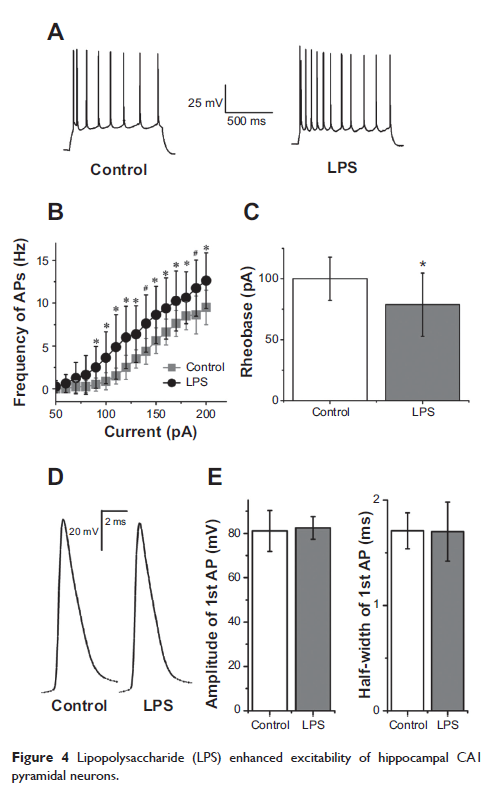108605
论文已发表
注册即可获取德孚的最新动态
IF 收录期刊
- 3.4 Breast Cancer (Dove Med Press)
- 3.2 Clin Epidemiol
- 2.6 Cancer Manag Res
- 2.9 Infect Drug Resist
- 3.7 Clin Interv Aging
- 5.1 Drug Des Dev Ther
- 3.1 Int J Chronic Obstr
- 6.6 Int J Nanomed
- 2.6 Int J Women's Health
- 2.9 Neuropsych Dis Treat
- 2.8 OncoTargets Ther
- 2.0 Patient Prefer Adher
- 2.2 Ther Clin Risk Manag
- 2.5 J Pain Res
- 3.0 Diabet Metab Synd Ob
- 3.2 Psychol Res Behav Ma
- 3.4 Nat Sci Sleep
- 1.8 Pharmgenomics Pers Med
- 2.0 Risk Manag Healthc Policy
- 4.1 J Inflamm Res
- 2.0 Int J Gen Med
- 3.4 J Hepatocell Carcinoma
- 3.0 J Asthma Allergy
- 2.2 Clin Cosmet Investig Dermatol
- 2.4 J Multidiscip Healthc

已发表论文
通过增强兴奋性突触传递以及体外神经元兴奋性,急性脂多糖暴露有助于癫痫样活动
Authors Gao F, Liu Z, Ren W, Jiang W
Published Date August 2014 Volume 2014:10 Pages 1489—1495
DOI http://dx.doi.org/10.2147/NDT.S65695
Received 7 April 2014, Accepted 5 June 2014, Published 16 August 2014
Abstract: Growing evidence indicates brain inflammation has been involved in the genesis of seizures. However, the direct effect of acute inflammation on neuronal circuits is not well known. Lipopolysaccharide (LPS) has been used extensively to stimulate brain inflammatory responses both in vivo and in vitro. Here, we observed the contribution of inflammation induced by 10 μg/mL LPS to the excitability of neuronal circuits in acute hippocampal slices. When slices were incubated with LPS for 30 minutes, significant increased concentration of tumor necrosis factor α and interleukin 1β were detected by enzyme-linked immunosorbent assay. In electrophysiological recordings, we found that frequency of epileptiform discharges and spikes per burst increased 30 minutes after LPS application. LPS enhanced evoked excitatory postsynaptic currents but did not modify evoked inhibitory postsynaptic currents. In addition, exposure to LPS enhanced the excitability of CA1 pyramidal neurons, as demonstrated by a decrease in rheobase and an increase in action potential frequency elicited by depolarizing current injection. Our observations suggest that acute inflammation induced by LPS facilitates epileptiform activity in vitro and that enhancement of excitatory synaptic transmission and neuronal excitability may contribute to this facilitation. These results may provide new clues for treating seizures associated with brain inflammatory disease.
Keywords: lipopolysaccharide, hippocampus, inflammation, epileptiform activity, synaptic transmission, neuronal excitability
Keywords: lipopolysaccharide, hippocampus, inflammation, epileptiform activity, synaptic transmission, neuronal excitability
